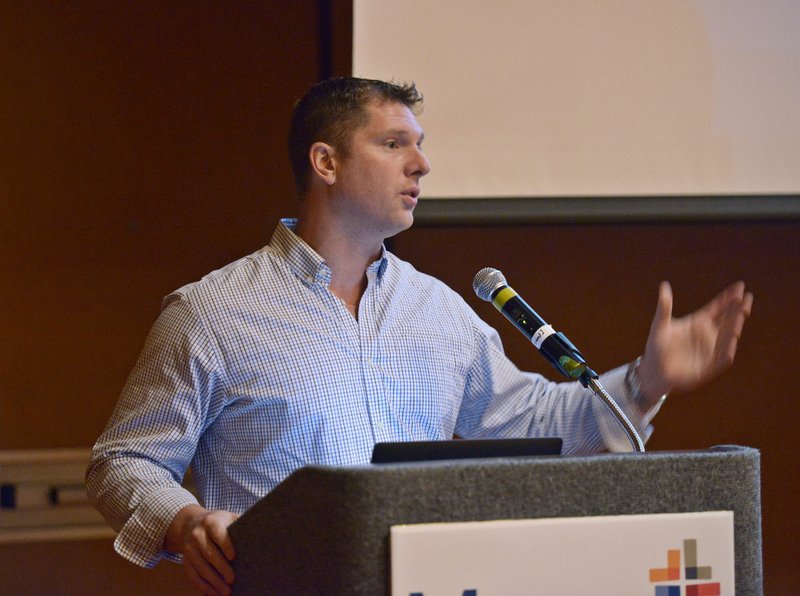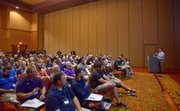ROGERS -- Arkansas and Texas are longtime rivals on the football field, but both programs are on the same team when it comes to player safety.
The Longhorns are the first Power Five program to wear helmets that include sensors to monitor hard hits to the head. The Razorbacks haven't gone high tech yet, but their offensive and defensive lineman are wearing padded cushions on the outside of the helmets during practice.
The moves are part of a growing effort and awareness against head injuries that can lead to serious health problems.
"Concussions are a controversial topic, and I realize that," said R.J. Elbin, an assistant professor in exercise science at the University of Arkansas. "But football is a great sport when done right."
Elbin was one of the featured speakers during the Mercy Coaching Summit at the Embassy Suites in Rogers last week. Elbin's nearly one-hour presentation came on the heels of a report on brain disease linked to repeated blows to the head that garnered plenty of national attention.
A study conducted by researchers at a Boston brain bank found chronic traumatic encephalopathy in 110 of 111 brains of deceased former football players, most of them from the NFL. Many scientists believe repeated blows to the head increase the risk for developing CTE, but even researchers in the Boston study stressed other variables could be in play.
"The results are interesting, but we need more research, as the authors have stated," said Elbin, a former option quarterback in high school who has specialized in concussion research for nearly a decade. "The study highlights a potential consequence of concussion. However, there are a lot of variables here that haven't been addressed, and there are other sports besides football that certainly need to be considered."
While cause and affect are still largely unknown, there is no doubt there is greater awareness at all levels in sports about concussions and potential harm to the brain. Even in high school, the decision on whether a player needs to sit out after a hard hit is left in the hands of an athletic trainer and not the coach.
That's true at all public schools in Arkansas, from the large programs in the 7A-West Conference to the smaller programs in the state.
"When a kid tells me he has a headache, we sit him out and let the trainer make the decision," Greenland coach Lee Larkan said. "We're not trained well enough to do it. Probably, 20 years ago, there were a lot more concussions that were not diagnosed and now, maybe, there's situations that are over-diagnosed. But as a rule, it's better to be safe than sorry."
Elbin recommends that high schools establish a task force in the treatment of concussions with coaches, trainers, teachers and school personnel working together as a team.
"If you got your bell rung when I played, you got some smelling sauce and went right back out there," said Bentonville West coach Bryan Pratt, who sat in the front row during Elbin's presentation. "The concussion issue is really complicated because different kids can react in different ways. But you have to trust your athletic trainers and the people who work with that, because it's their specialty. It's all about what's best for the kids because you don't want to do anything to jeopardize their future."
The standard recovery time for most players who've had concussions used to be viewed as seven to 10 days, which, conveniently, meant players wouldn't miss more than one game. But the research has gotten more serious, and recovery time is now accepted as at least two to three weeks for most concussions.
"If a player continues to play after a concussion, that doubles the recovery time," Elbin said. "You wouldn't run on an injured ankle, so why should you try to play after an injury to your head? Concussions fight dirty. Whatever you have is going to be affected."
Sports on 07/30/2017

